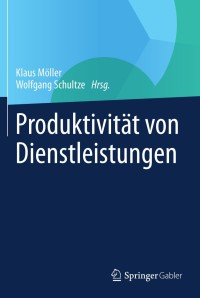PROBLEM 12-7A Prepare a Statement of Cash Flows LO 12-1, LOI2-2) Comparative financial statements for Weaver Company follow: Weaver Company Comparative Balance Sheet December 31, 2015 and 2014 2015 2014 $ 9 340 125 $ 15 240 175 6 436 610 470 85 517 385 $1,017 $840 Assets Cash Accounts receivable . . . . Inventory .. Prepaid expenses ....... Total current assets Property, plant, and equipment ........ Less accumulated depreciation Net property, plant, and equipment .. Long-term investments Total assets ......................... Liabilities and Stockholders' Equity Accounts payable Accrued liabilities . . . . . . . . Income taxes payable. Total current liabilities Bonds payable. Total liabilities Common stock Retained earnings Total stockholders' equity Total liabilities and stockholders' equity .... $ 310 $230 60 40 410 336 180 516 700 210 107 317 324 ! $840 Weaver Company Income Statement For the Year Ended December 31, 2015 $800 500 300 Sales ....... Cost of goods sold ....... Gross margin ......... Selling and administrative expenses ... Net operating income ..... Nonoperating items: Gain on sale of investments ........ Loss on sale of equipment Income before taxes Income taxes ............ Net income .... .. During 2015, Weaver sold some equipment for $20 that had cost $40 and on which there was accumu- lated depreciation of $16. In addition, the company sold long-term investments for $10 that had cost $3 when purchased several years ago. A cash dividend was paid during 2015 and the company repurchased $40 of its own stock. Weaver did not retire any bonds during 2015. Required: 1. Using the indirect method, determine the net cash provided by operating activities for 2015. 2. Using the information in (1) above, along with an analysis of the remaining balance sheet accounts, prepare a statement of cash flows for 2015. Problem 12-7A 1. Net cash provided by operating activities: Step 1: The following equation can be applied to the Accumulated Depreciation account to compute the depreciation to add back to net income: Beginning balance - Debits + Credits = Ending balance $ - $ + Credits = $ Credits = $ - $ + $ Credits = $ Step 2: The guidelines from Exhibit 12-2 can be used to analyze the changes in noncash balance sheet accounts that impact net income as follows: Increase in Decrease in Account Account Balance Balance Current Assets Accounts receivable. Inventory ...... Prepaid expenses ......... Current Liabilities Accounts payable.. Accrued liabilities .. .......... Income taxes payable.... Step 3: The gain on sale of investments is subtracted from net income and the loss on the sale of equipment is added to net income. Problem 12-7A (continued) The net cash provided by operating activities is computed as follows: Net income...... $ 63 Adjustments to convert net income to cash basis: Depreciation in accounts receivable..... in inventory.. in prepaid expenses...... in accounts payable in accrued liabilities in income taxes payable... Gain on sale of investments Loss on sale of equipment. Net cash provided by operating activities ......... 2. Prepare a statement of cash flows. Investing and Financing activities: The guidelines from Exhibit 12-3 can be used to analyze the changes in noncash balance sheet accounts that impact investing and financing rash flows as follows: Increase Decrease in Account in Account Balance Balance Noncurrent Assets Property, plant, and equipment... Long-term investments ..... Liabilities and Stockholders' Equity Bonds payable ......... Common stock ....... Problem 12-7A (continued) The decrease in the long-term investments account equals the cost of the long-term investment sold; therefore, Weaver did not purchase any long-term investments during the year. The proceeds from the sale of a long-term investment should be recorded as a cash inflow in the investing activities section of the statement. Because Weaver did not retire any bonds during the year, the corresponding amount in the table on the prior page represents the gross cash inflow pertaining to a bond issuance. The company repurchased of its own stock, so the corresponding amount on the prior page is reported as a cash outflow in the financing activities section in the statement of cash flows. Property, plant, and equipment and retained earnings require further analysis as follows: Property, plant, and equipment: Beginning balance + Debits - Credits = Ending balance $ + Debits - $ = $ Debits = $ - $ + $ Debits = $ The additions to property, plant, and equipment are recorded as a cash outflow and the proceeds from the sale of equipment are recorded as a cash inflow. Retained earnings: Beginning balance - Debits + Credits = Ending balance $ - Debits + $ = $ $ = $ + Debits Debits = $ The dividend payment should be recorded as a cash outflow in the financing activities section of the statement. Problem 12-7A (continued) $ 63 Weaver Company Statement of Cash Flows For the Year Ended December 31, 2015 Operating activities: Net income. Adjustments to convert net income to cash basis: Depreciation .......... in accounts receivable..... in inventory.. in prepaid expenses ........ in accounts payable .. in accrued liabilities in income taxes payable.......... Gain on sale of investments .......... Loss on sale of equipment ......... Net cash provided by operating activities ... Investing activities: Proceeds from sale of long-term investments Proceeds from sale of equipment..... Additions to plant and equipment............ Net cash used in investing activities.......... Financing activities: Issuance of bonds payable. Decrease in common stock .............. Cash dividends........... Net cash used in financing activities ............ Net decrease in cash. Beginning cash and cash equivalents ........... Ending cash and cash equivalents












